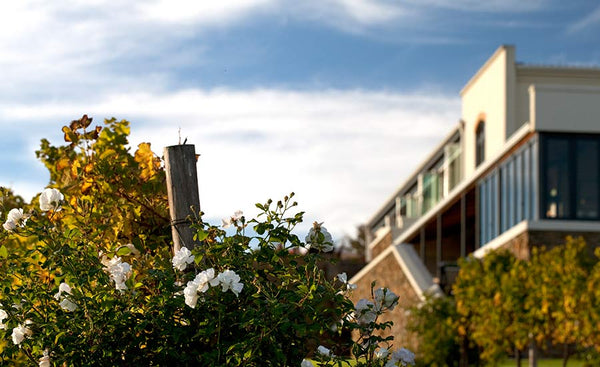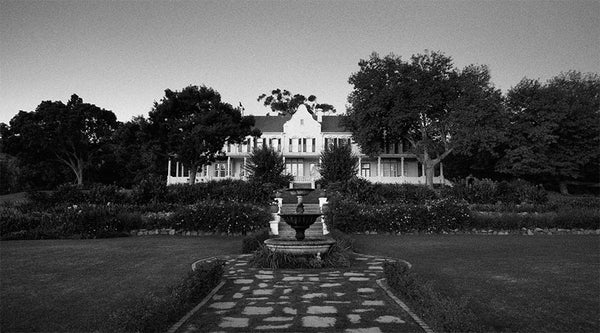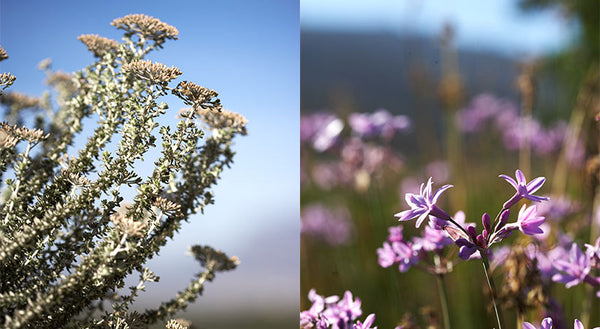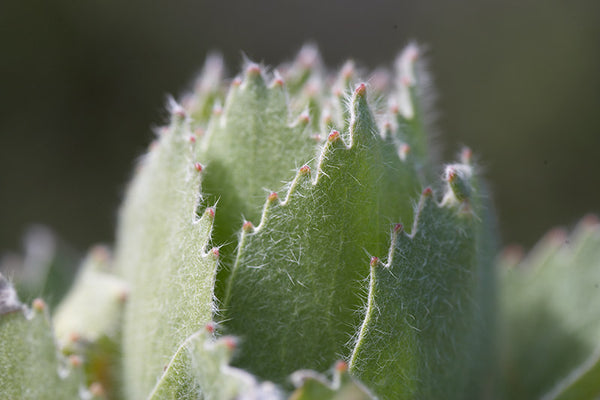News
De Grendel and the Architects Who Have Shaped It
While the city of Cape Town was developing rapidly, in 1898, the sumptuous manor house at the De Grendel farm was being built 'in the country'. The Victorian mansion is in the style of architect Herbert Baker’s unique approach to the Cape-Dutch gable style. Baker, who designed the Union Buildings and other well-known and grand South African buildings, designed the De Grendel’s manor house in a way that reflects the grandeur and rich history of the Graaffs that we are all able to appreciate today.
The first baronet, Sir David Graaff, had just bought the farm where he settled his prized Arab horses and Friesland cattle. In the early days Graaff’s coaches for his horses were kept on the hillside of De Grendel’s manor house in the Koetshuis. It was originally a resting place for travelers before crossing the Tygerberg on their way to the interior, and today, the prize Sauvignon Blanc wine produced on the farm gets its name from the Koetshuis.
Soon after his resignation as cabinet member in 1913 Graaff extended the residence. A third gable was added asymmetrically to the imposing double-storey homestead with its eight bedrooms and panoramic seaward view across the plain to Table Mountain. At the time of Graaff’s extensions of the manor house he had a small church built for the use of the people in the neighbourhood. A prominent Cape firm of architects, Parker & Forsyth, drew up the plans. And called the little stone church the Tygerberg Church. In the cemetery adjoining the little church, all the deceased Graaff baronets and members of their families are peacefully resting.
The wine cellar, officially opened in 2006 after Sir David started producing wine at De Grendel, was designed by a family member, Linda Graaff, the Cape Town architect and daughter of Dr Jannie Graaff, uncle of Sir David. The office of the farm’s owner, presently Sir De Villiers Graaff the fourth baronet, was also moved to this building. Initially the extended structure on the hill was planned closer to the manor house and lower down the slopes of the Tygerberg. But on the higher level where the cellar was eventually built, it encompassed both the magnificent view of Table Mountain and at the back the higher part of the Tygerberg with its renosterveld reserve.
Using the principles of Feng Shui, the ancient system of harmonizing everyone with the surrounding environment, the cellar has been designed and decorated to blend the old with the new, combining the heritage of the Graaff family history with a new era in winemaking and wine tasting. Also, architect Linda Graaff purposely set out to link the public space and private operations of the winemaking process in the cellar. From the front entrance with its pillars which replicate those in the manor’s garden, a ramp goes down to the cellar and winetasting area alongside dramatic windows which act as spy holes into the manufacturing process and into the vast cellar itself where the barrels are stored.
It is a remarkable feat to have the architecture so interwoven with the principles and creations of De Grendel today. Everything that comes out of De Grendel is embellished with it’s exceptional foundations; for what would the wine, the cattle or the land be without them.
The Fragile Ecosystem on our Farm
The Cape has a delicate ecosystem that is sentimental to De Grendel; their family motto is Justis Favet Creator (The Creator favours Justice) which they fervently apply to the environment in order to protect for future generations.
The addition of agricultural practices has enhanced the farm's philosophy of conservation and has set an impressive mark for sustainable agriculture in South Africa. It is a farm, but it is also a sanctuary to the animal and plant kingdoms that have little space left to be wild. For that, De Grendel can safely claim a part of South Africa’s biodiversity.
The distinct natural vegetation area is known as 'renosterveld'; which is a term used for one of the major plant communities and vegetation types of the Cape Floral Kingdom. ‘Renosterveld’ is derived from the domination of grey-coloured plants called the renosterbos. There are however, proteas, ericas and restios, which are also typical of fynbos habitats.
Fascinatingly, there is a whole ecosystem that exists because of the renosterveld; many renosterveld trees and shrubs produce berries, which attract fruit-eating birds (e.g. bulbuls, Cape white-eyes) and other animals (e.g. geometric tortoises, chacma baboons) and then, during spring, renosterveld flowers attract a wide variety of pollinators, like bees, flies, beetles and sunbirds. For bird watchers and flower lovers, De Grendel makes for a perfect hangout.
Unfortunately, in the Cape Floristic Region, less than 2% of renosterveld vegetation types are formally conserved, highlighting how these are some of the most threatened types of vegetation in the world. And so, De Grendel, with a grand conscience for conservation, is a part of WWF’s Biodiversity and Wine Initiative (BWI), a pioneering partnership between the South African wine industry and the conservation sector. It demonstrates the balance between nature and farming by protecting the natural habitat, encouraging wine producers to farm sustainably and by expressing the advantages of the Cape’s abundant diversity in their wines. Over 140 000 hectares of natural area have been conserved by BWI producers since project inception.
The world is seeing larger and larger carbon footprints which De Grendel passionately averts; they are instead proudly carbon negative. An assessment of greenhouse gasses emitted and absorbed through operations on the De Grendel wine and dairy estate established that the Durbanville farm is a net carbon sink, meaning that the farm releases less carbon into the air than it absorbs through growth of vegetation on the farm.
The agricultural sphere of De Grendel also makes sure to be water-wise. Using water-wise principles, a series of agricultural drains capture storm water through the wet season and send it down to the dam where it is circulated throughout the farm, quenching all of the farm-life’s thirst. And of course, the dairy farm is sustainable in its production and free-range in its philosophy, allowing the cows a happy sun-ful, grassy life.
In the coming weeks we'll be sharing some of the wild animal species that you can see when you visit De Grendel. What could be better than sipping on an exquisite wine while you overlook fields where our indigenous fauna roam?
How The Graaffs Became 'Sirs'
It's a question we often get asked at De Grendel. How did a family way down in the south of Africa come to carry this title? How did a former herdboy from a humble background earn it?
The baronetcy that embellishes the De Grendel name was born out of exceptional drive and persistence; from a man who had very little schooling, but a significant impact on the world around him. Sir David Graaff, Bt, was from a poor family on a farm in Villiersdorp where he went from being a herdboy, having just finished third grade, to fulfilling a versatile range of jobs and roles in and around Cape Town.

Sir De Villiers Graaff (2nd Baronet) and his wife, Helena.
Regardless of his premature exit from proper education, David Graaff showed that he had an exceptional brain for business at an early age. Dawie was only 11 when he left the farm where he was born in the Overberg for Cape Town to work in the butchery of a relative, Jacobus Arnoldus Combrinck, which he took over at the age of 18.
His innovations lay in the field of refrigeration and the meat industry with an extensive distribution network for frozen products. He bought refrigerator carriages for transporting fresh foods on the growing South African rail network. This large-scale refrigeration of meat, fruit and other products was unprecedented at the time and thus he was able to make a large fortune. In fact, he made such rapid progress that within a few years he was regarded as the pioneer of cold storage in South Africa.
As a successful young businessman, Graaff demonstrated a passionate sense of social responsibility early on as well. At 23 years old, he was elected as a Cape Town city councillor and at the age of 32 he became mayor of the Mother City. During his time as councillor, and especially as mayor (from 1890 to 1892), the city was thoroughly modernised, making a much more inhabitable place of the dirty city, derided by some writers at that time as the City of Stenches.
He played a decisive role in bringing electricity to Cape Town, and the first power plant was named after him, Graaff Electrical Lighting Works. The power plant is now a historic monument next to the Molteno Reservoir in Oranjezicht.

Moreover, as benefactor he set an example for South African business people by way of his assistance to various charities, in particular by donating large amounts for educational purposes. He funded the school named after him in his home town, Villiersdorp, and the De Villiers Graaff High School remains a monument to the high premium he had placed on good education and teaching.
Graaff was a bachelor when the British honorary titles were awarded to South Africans shortly after unification. Initially reluctant, he received a baronetcy in 1911. Two years later the 53-year-old bachelor, then a member of the nobility, married a clergyman’s daughter 30 years his junior.
Three sons were born out of his wedding to Eileen van Heerden, who became Lady Graaff. Graaff declared in his testament that De Grendel should be associated with his hereditary title, and that it should provide the baronetcy with a home in South Africa
So, what does the title mean? A baronetcy, the only British hereditary honour which is not a peerage, is part of the centuries-old tradition of honorary titles conferred by the British crown. This particular title dates back to 1611, when King James I introduced it to collect funds. A baronetcy, like a lordship, is a hereditary title, mainly for male descendants, and has a territorial designation. A baronet ranks between a baron and a knight, but does not automatically earn a place in the British House of Lords. Baronets are not formally deemed to be noble, although they are widely regarded as being members of the aristocracy.
5 Most Romantic Tales from De Grendel
With Valentine's Day almost upon us, we thought we'd dig into the enchanting stories of the Graaff family and share them with you. De Grendel farm is also a popular spot for romancing couples thanks to its incredible view of Table Mountain. What a great location to pop the question, while toasting your love with a glass of our MCC!

Where the love story begins
Sir David Graaff, the first in the family to receive the baronetcy title and the man who founded De Grendel, was directly related to one of the most beautiful love stories that enriches the romantic history of De Grendel. Sir David Graaff’s father, the farmhand, was able to win the hand and heart of the farmer’s pretty young daughter, despite a few obstacles. It all happened in the middle of the 19th century, among the bushes of Wolfhuiskloof, where the herdboy Petrus Norbertus Johannes Graaff, generally known as Nort, worked. Fortuitously for him, Wolfhuiskloof was situated adjacent to the farm Radyn owned by Pieter Hendrik de Villiers, who had a very pretty daughter, Anna Elizabeth.
As the herdboy, Nort had to go to Bo-Radyn to work, which was often enough to fall in love with Anna. But De Villiers didn’t like him, and banned him from seeing his daughter. Nort was a man of tenacity, so he made sure he and Anna saw each other. After a love letter or two, Anna eventually built up the courage to elope with Nort, and they lived happily ever after… and so did one of the love letters, which was found in a secret drawer of a large armoire; an heirloom that came from Wolfhuiskloof.
Love against all odds
Nort’s son, Sir David Graaff (the first baronet), who inherited the land, carried on this air of tenacious romance when he married a much younger woman, very much out of his league, and at an age that everyone reckoned was too late. He was a bachelor when the British honorary title of baronetcy was awarded to him, which was probably because it was thought that he would not have any heirs. But two years later, at the age of 53, Sir David Graaff, a member of the nobility, married a clergyman’s daughter, Eileen van Heerden, who was 30 years his junior. Her mother was initially opposed to the courtship due to the age difference, but was convinced after a visit to Graaff’s glorious farm, De Grendel. And so Eileen became the much admired first Lady Graaff, who eventually proved herself a great match for her husband’s business acumen, and raised three sons to carry the legacy even further.
Love for the garden
The Graaff romance extends across all aspects of life on the farm; with Lady Graaff pouring her tender love and care into the lush fauna, fauna and furniture that gives life to De Grendel. Lady Eileen’s daughter-in-law, Lady Ena, described how Lady Eileen would often, while they sat drinking tea on the front veranda of De Grendel overlooking the grounds, tell her how, as a young bride, she had lived out her passion for gardening. Loads of soil had been brought in to transform the inhospitable landscape into a Garden of Eden. The formal layout of the garden included lawns, terraces, hedges and herbaceous borders, Italian statues, and the flowers a riot of colour in the different seasons.
Although the show garden was her main interest at De Grendel, she also had a deep love for the antique furniture in the house, tracing their history as if they were family members, like the armoire for example, in which her husband found his father’s love letter to his mother, Anna.
The greatest bond of all
The love a mother has for her child is one of the strongest connections to exist in the human heart. It is this kind of love given to all of the Graaff children throughout the generations that must have come to fuel their success. When Jannie, the youngest of Lady Eileen and Sir David’s (the first baronet) three sons, was only three years old when his father died. In these trying circumstances Lady Eileen’s motherly instincts never wavered. Jannie had to go to boarding school, so she gave him a basket with five doves, which he put under his bed. Each day a dove with a letter from Jannie would fly back to De Grendel where the butler, Frikkie Esau, fetched it from the dovecote to give to his mother.









